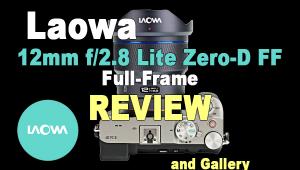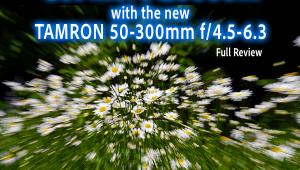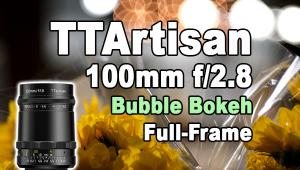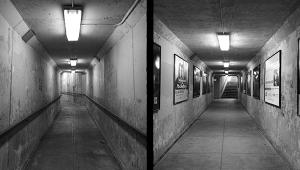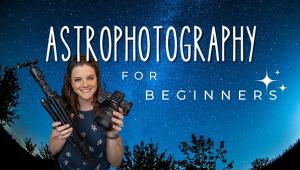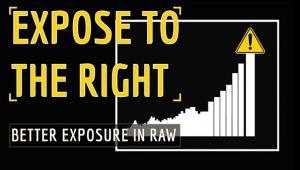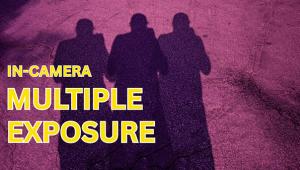Canon EF 70-200mm f/2.8L IS II USM Lens Review

Perhaps the most versatile of all moderate tele zoom focal lengths, the 70-200mm or thereabouts range is a hallmark and standard-bearer for many optical companies. Being a constant aperture (fast) zoom, this lens opens up numerous focusing, depth of field and perhaps as important low light shooting possibilities that make it a lens most Canon photographers aspire to own. Introduced last year, we got a chance to work with one and were so impressed we thought we’d revisit it with a quick review.
This 70-200mm “full frame coverage” lens ($2499 MSRP ) weighs just about the same as the previous version, about 52 oz, and contains 23 elements in 19 groups, including one fluorite and five UD (Canon’s ultra-low dispersion glass) elements, all to reduce chromatic aberration and enhance optical performance. Minimum focusing distance at all focal length settings is just under 4 ft, so while not a macro lens it certainly allows for some excellent close focusing shots and, with that wide aperture, great out of focus background effects. Filter size is 77mm, common with fast tele zooms, and the inner focusing system means the lens does not change size (3.5 diameter by 7.8 long) when focusing or changing focal lengths.
This lens is built to pro specs and Canon makes a point of assuring us that the seals and construction are moisture and dust resistant. The IS (image stabilization) system is said to be second generation and offers up to four stops of steadiness over the usual 1/focal length rule at all focal lengths. So, at 200mm, minimum shutter speed would usually be at least 1/250 sec, depending on shooting conditions. The four-stop gain would theoretically allow for a 1/15 sec steady shot and my tests show that it certainly delivers the goods.
Fast Lens with IS


Given that we all have the ability to shift ISO and do so these days with less trepidation than we would have in the past, and that this lens opens wide to f/2.8, the low-light ability of this lens is stunning indeed. Use the 1.4X Extender EF II and the focal length can be stretched to 280mm with only one stop loss in light, giving the lens an f/4 max aperture that can be used at max IS capability at 1/30 sec handheld. I assume you would want to shoot at the lowest ISO you could for best overall quality, but, again, raising ISO would stretch the capabilities of this lens even further.
Background Effects

The lens barrel offers numerous options, including “close-up” range and extended range AF settings, the idea being that if the lens does not have to rack all the way out from close up it will go faster, though I have to say that the USM motor is uncannily fast and silent. You can swap between manual and autofocus with a switch as well, though full-time manual override makes this less necessary in my eyes. You can choose to work with IS on or off, and in two modes, one for body and breath motion and the other for helping to counteract the shake caused by an unstable platform or moving vehicle. As with all such lenses shooting with IS on when the camera is on a tripod actually creates more of a problem than it solves. Shooting with the tripod mount collar allows you to rotate between vertical and horizontal easily enough, and is recommended to help take strain off the body, so don’t mount the camera “straight” to a tripod head.

I photographed with the lens on a Canon 5D, thus had no multiplication effect; shooting on an APS-C size sensor Canon would get you a 1.6X multiplier, or a 112 to 320mm lens. I left AF on and overrode with manual when needed. I shot close-ups at max focal length to enhance the background bokeh effects and shot sports photos in dim light to get a feel for what a fast lens and low ISO can do.
In general the lens operates smoothly and cleanly, and as fast as you could desire. However, when I did my admittedly unscientific, but to me practical vignetting test the lens had some problems at wide apertures on the full-frame 5D sensor. I shot a blank wall defocused at a range of focal length settings and at full stop changes using AV exposure mode on the 5D. I made all shots at ISO 200. At 200mm vignetting is quite apparent at f/2.8 and less noticeable but still there at f/4 and f/5.6, and all but goes away at narrower apertures. At the 100mm focal length range the same problem came up, and also went away above f/5.6. At 70mm the vignetting at f/2.8 is there, but is much less apparent and just curses the edges at f/5.6 and vanishes after that.
Fast Lens, Low Light

I then switched bodies to a trusty 30D, with APS-C sensor, and vignetting problems were not visibly apparent at any aperture at any focal length setting, as one might expect with the large image circle and smaller area of coverage needed on the APS-C size sensor.
I contacted Canon and their tech guru Chuck Westfall had this to say: "Virtually all lenses show some vignetting in the corners when used at or near their maximum aperture settings, especially zoom lenses. For those who find that characteristic objectionable, Canon offers Peripheral Illumination Correction with all current EOS models. In-camera Peripheral Illumination Correction works with in-camera JPEG files. This feature is also available for RAW images in DPP, Photoshop, Lightroom, Aperture, and other current RAW conversion software applications."
Will this diminish the enthusiasm “full-frame” Canon owners have for this otherwise wonderful lens?. For me, a fast lens has many advantages. It allows you to shoot in low light and other stressful conditions handheld. Its wide aperture allows you to create images that a more conventional zoom cannot. And unless you are shooting blank walls, as I did in this lens test, you might not even notice or be bothered by the vignette effect. Though this is of concern there’s no question that this lens will deliver the goods for a wide variety of photo ops.

